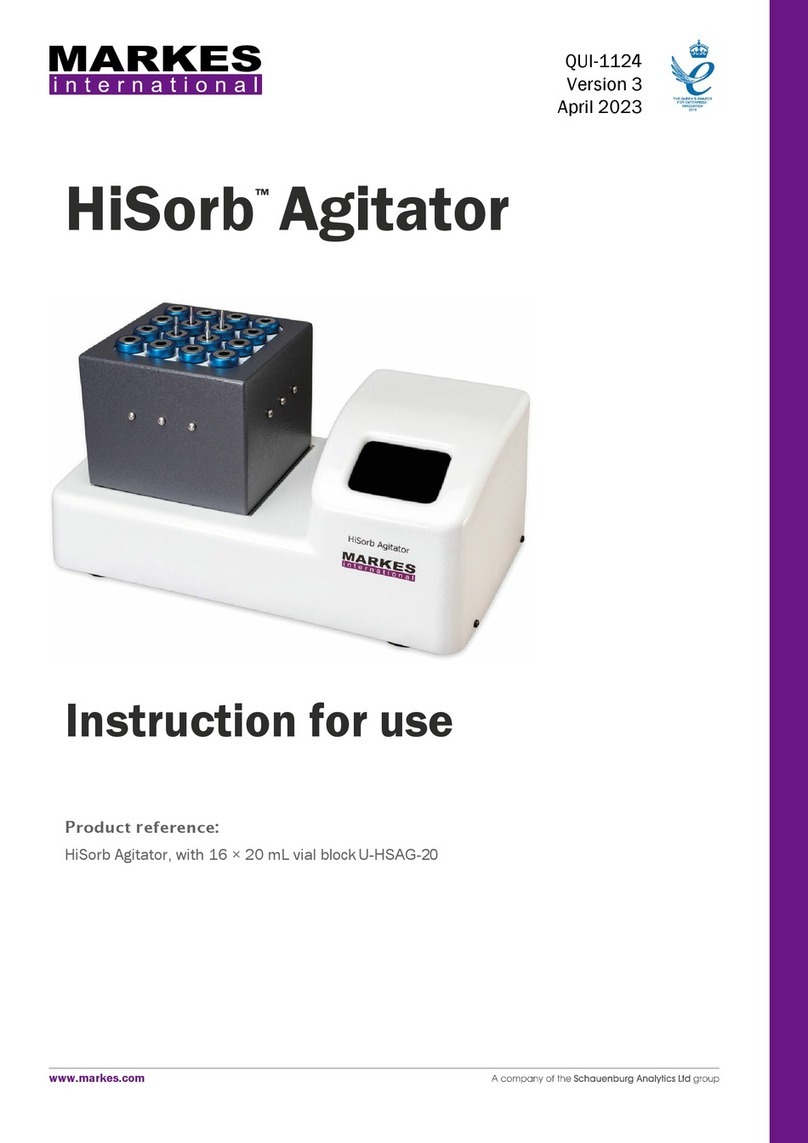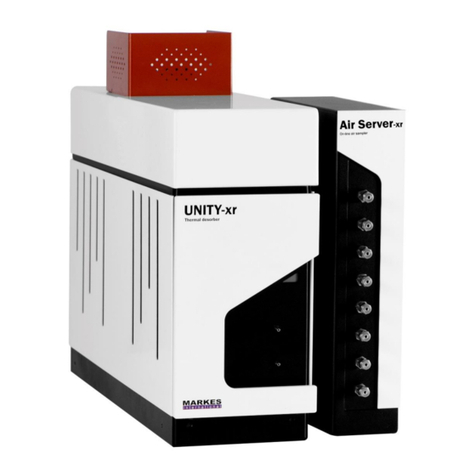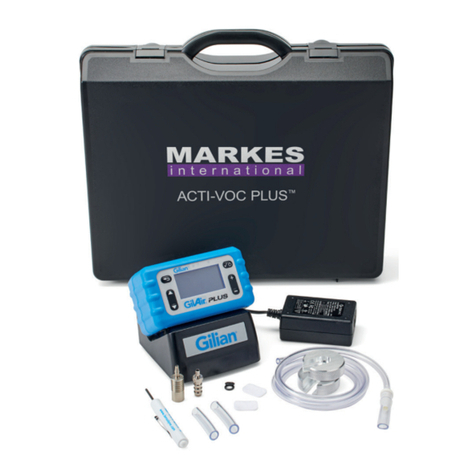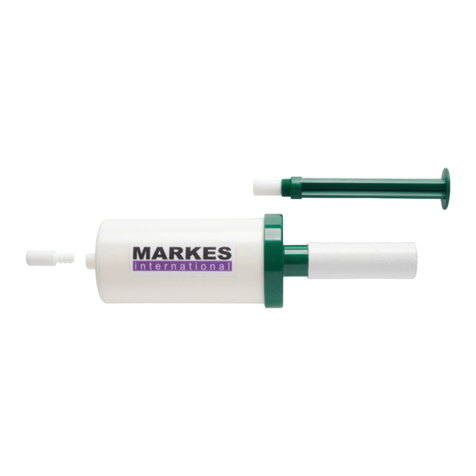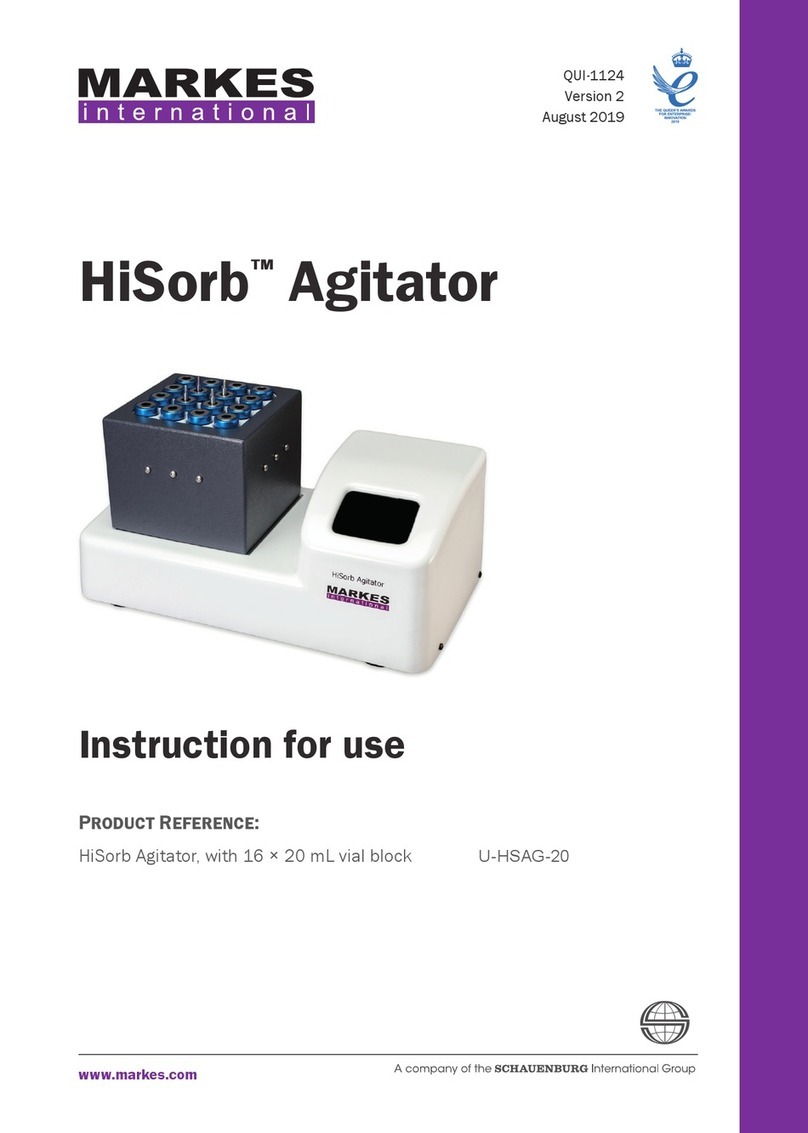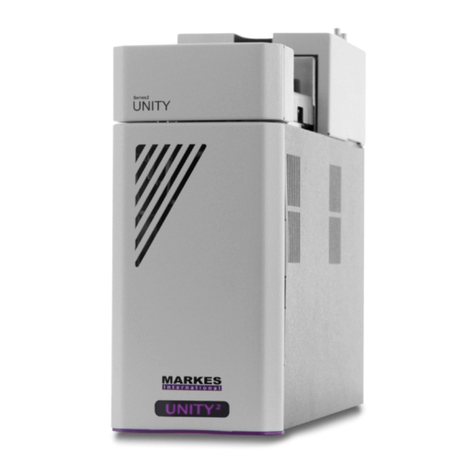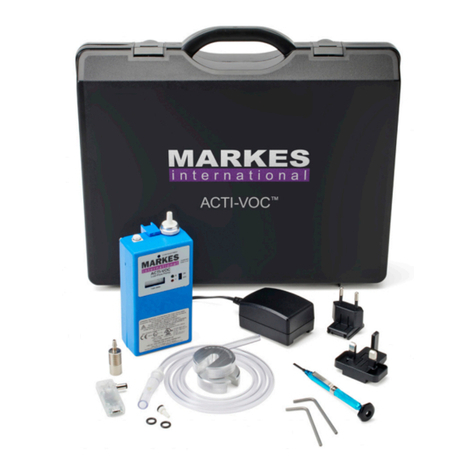T: +44 (0)1443 230935 F: +44 (0)1443 231531 E: enquiries@markes.com
www.markes.com
2.4.2 When should desorb/split flows be measured? ............. 18
2.4.3 The Set Gas Flow function................................................ 19
2.4.4 Measuring and adjusting flows during Set Gas Flow ..... 19
2.4.5 To exit the Set Gas Flows Function .................................. 20
2.4.6 Gas flow constraints - minimum & maximum settings .. 20
2.4.7 Sample splitting ................................................................ 20
2.4.8 Analytical column capacity ............................................... 20
2.4.9 GC system detection limits ............................................... 20
2.4.10 Calculating analyte masses in the sample tube ............. 21
2.4.11 Calculating splits/split modes ......................................... 21
2.4.12 UNITY 2 systems with Electronic Carrier Control (ECC) .. 22
2.4.13 UNITY 2 systems configured with Electronic Mass
Flow Control....................................................................... 22
3. Software ............................................................................................... 23
3.1 Running the software ..................................................................... 23
3.2 Status bar ....................................................................................... 23
3.2.1 External ready signal ........................................................ 24
3.3 Toolbar functions ............................................................................ 25
3.3.1 Method Linking ................................................................. 27
3.3.2 The Trap Heat Method ...................................................... 29
3.3.3 Schematic display of UNITY 2 status ............................... 30
3.3.4 Controlling method ........................................................... 30
3.4 UNITY 2 Options.............................................................................. 30
3.4.1 Configuration ..................................................................... 31
3.4.2 GC Interface ...................................................................... 32
3.4.3 Gas & Flow ........................................................................ 32
3.4.4 Methods ............................................................................. 33
3.4.5 Reporting ........................................................................... 35
3.5 UNITY 2 method options ................................................................ 36
3.5.1 Split on or off in standby .................................................. 36
3.5.2 The Leak Test .................................................................... 36
3.5.3 Determining the prepurge time ....................................... 36
3.6 Desorption modes .......................................................................... 37
3.6.1 Tube conditioning mode ................................................... 37
3.6.2 Standard 2(3) stage desorption ...................................... 38
3.6.3 Sample tube prepurge ...................................................... 42
3.6.4 Sample tube prepurge at elevated temperature ............ 43
3.6.5 SecureTD-Q™ - Re-collection for repeat analysis ........... 43
3.6.6 Cold Trap conditioning ...................................................... 44
3.6.7 UNITY 2 parameter specifications ................................... 45
3.7 Uninstalling UNITY 2 software ....................................................... 46
